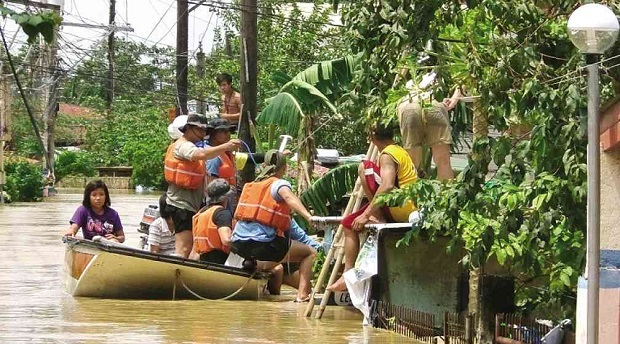Luzon LGUs’ focus: El Niño, fiercer storms

DISASTERS are coming with increasing regularity in Central Luzon, with policemen in the front line of rescue missions. PHOTO FROM PNP CENTRAL LUZON
CITY OF SAN FERNANDO—Local governments in Central Luzon’s seven provinces have shifted to disaster preparedness in anticipation of a drought associated with the El Niño weather phenomenon and stronger typhoons in the next six months, a civil defense official said.
Provincial, town and city governments are also addressing other hazards, such as earthquakes, tsunamis and landslides, based on the action plan that they and the Regional Disaster Risk Reduction and Management Council (RDRRMC) crafted for the remaining two years in office of President Aquino, said RDRRMC Chair Josefina Timoteo.
“It’s an all-hazards plan,” said Timoteo, who also heads the Office of the Civil Defense (OCD) in the region.
The action plan, she said, fulfills one of the mandates of Republic Act No. 10121, or the Philippine Disaster Risk Reduction and Management Act of 2010.
Severe floods that hit the region between 2000 and 2011 left 455 people dead and 188 more injured. The region racked up damage worth P28.5 billion, with P14.1 billion of this amount recorded in 2011 alone, documents from the OCD showed.
In the 2012 habagat (monsoon rains), 46 people died, mostly from drowning. Damage on roads, bridges, dikes, crops and fishponds reached P2 billion.
In August 2013, floods spawned by Typhoon “Labuyo” killed two persons and left 12,364 families homeless or with damaged homes in 240 villages in Aurora, Bulacan, Nueva Ecija, Pampanga and Zambales provinces.
Damage to agriculture and infrastructure reached P554 million and P129 million, respectively.
Tropical Storm “Maring,” which also hit in August last year, left 11 people dead, affected 1.9 million residents, or about 15 percent of the region’s population, and damaged 462 houses. Damage to agriculture was estimated at P343 million.
Timoteo said the newest action plan detailed activities for prevention and mitigation, preparedness, response and recovery and rehabilitation.
She said leaders prioritized the regular conduct of earthquake and tsunami drills in vulnerable communities, training of responders, purchase of rescue equipment, making a standard operating manual for disaster response and coming up with a sound communication plan that shares vital and timely information.
To strengthen the regional plan, provincial governments are holding disaster reduction summits.
These are scheduled on May 22-23 in Bataan, May 28-29 in Aurora, June 5-6 in Pampanga, June 10-11 in Tarlac, June 17-18 in Nueva Ecija, June 23-24 in Zambales and June 26-27 in Bulacan.
Local officials will also be sharing best practices, Timoteo said.
The city government in San Fernando, Pampanga, has resettled 400 families away from San Fernando River to protect them from floods and in compliance with a Supreme Court order to clean Manila Bay. They were transferred to San Fernando Heights in Barangay Malpitic. Tonette Orejas, Inquirer Central Luzon














